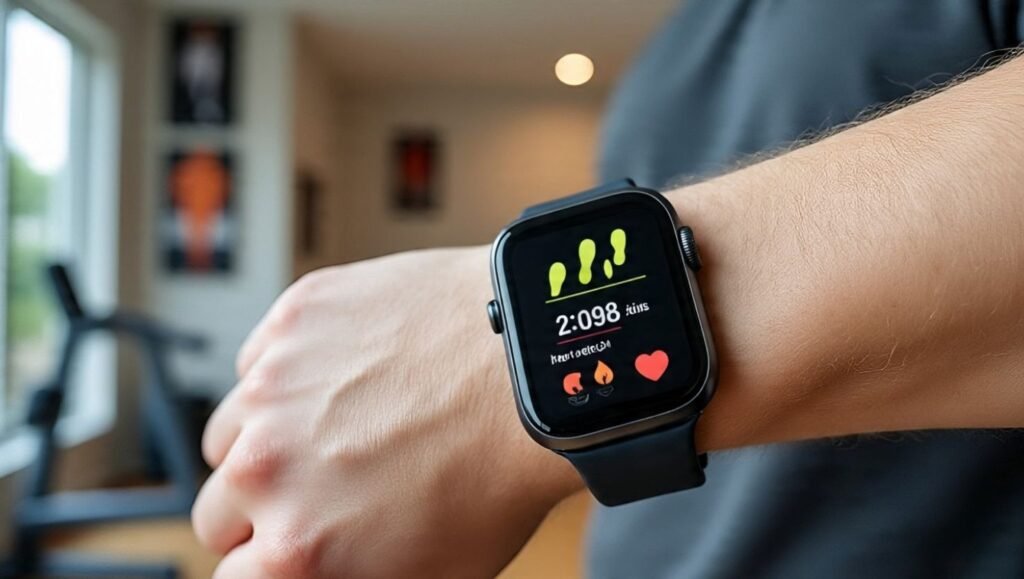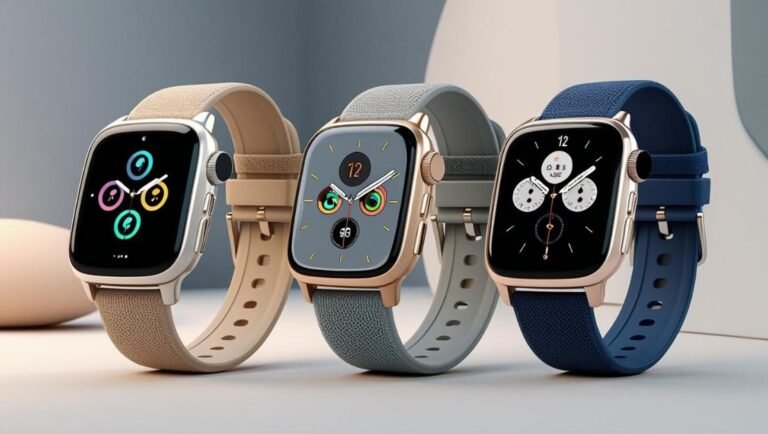How to Use a Smartwatch for Weight Loss Tracking
In today’s fast-paced world, achieving weight loss goals can feel challenging, but a smartwatch simplifies the journey by offering powerful tools to track your progress. Whether you’re aiming to shed pounds or improve fitness, a smartwatch provides real-time data on physical activity, calories burned, heart rate, sleep patterns, and more. Devices like the Apple Watch, Fitbit, or Garmin empower you to stay motivated and make informed decisions for a healthier lifestyle. This guide explores how to use a smartwatch for weight loss, offering practical tips to maximize its features. Start leveraging your smartwatch today to transform your weight loss journey with ease and precision!
Why Use a Smartwatch for Weight Loss?
Smartwatches have revolutionized fitness tracking by providing real-time data on physical activity, heart rate, sleep patterns, and more. These devices, such as the Apple Watch, Fitbit, Garmin, or Samsung Galaxy Watch, offer a range of features tailored to support weight loss. By tracking your daily habits and providing actionable insights, a smartwatch can help you make informed decisions to improve your health. Here’s how a smartwatch can be a game-changer for your weight loss journey:
- Activity Tracking: Monitors steps, calories burned, and workout intensity.
- Heart Rate Monitoring: Ensures you’re exercising in the right heart rate zone for fat burning.
- Diet Integration: Some smartwatches sync with apps to log food intake.
- Sleep Analysis: Tracks sleep quality, which impacts weight loss.
- Motivation and Reminders: Sends alerts to keep you active and accountable.
Now, let’s dive into the actionable steps to use your smartwatch effectively for weight loss.
Step 1: Set Up Your Smartwatch for Weight Loss Goals
Before you begin, ensure your smartwatch is configured to support your weight loss objectives. Here’s how to get started:
Choose the Right Smartwatch
Not all smartwatches are created equal. Select a device with robust fitness tracking features. Popular options include:
- Fitbit Versa 4: Great for calorie tracking and sleep analysis.
- Apple Watch Series 10: Offers advanced health metrics and app integration.
- Garmin Venu 3: Ideal for detailed workout tracking and GPS accuracy.
Personalize Your Settings
Input your personal information, such as age, weight, height, and gender, to ensure accurate calorie and activity calculations. Most smartwatches allow you to set specific goals, like daily step counts or calorie burn targets.
Sync with Fitness Apps
Connect your smartwatch to apps like MyFitnessPal, Strava, or Apple Health for seamless data integration. These apps can track your diet, workouts, and progress, providing a holistic view of your weight loss journey.
Step 2: Track Your Daily Activity
Physical activity is a cornerstone of weight loss, and smartwatches excel at monitoring your movement. Here’s how to use this feature effectively:
Monitor Steps and Distance
Set a daily step goal (e.g., 10,000 steps) to encourage consistent movement. Your smartwatch will track your steps and distance, motivating you to stay active throughout the day. Try these tips:
- Take short walks during breaks.
- Use stairs instead of elevators.
- Park farther from entrances to increase steps.
Track Calories Burned
Smartwatches estimate calories burned based on your activity level and heart rate. To maximize calorie burn:
- Engage in high-intensity interval training (HIIT) workouts.
- Incorporate strength training to boost metabolism.
- Use your smartwatch to track specific exercises like running, cycling, or swimming.
Use GPS for Outdoor Workouts
If your smartwatch has built-in GPS, use it to map outdoor activities like running or cycling. This feature provides accurate distance and pace data, helping you optimize your workouts for weight loss.
Step 3: Optimize Exercise with Heart Rate Monitoring

Heart rate monitoring is a powerful feature for weight loss, as it helps you exercise in the right intensity zone. Here’s how to use it:
Understand Heart Rate Zones
Smartwatches display your heart rate in real time, often categorized into zones:
- Fat-Burning Zone (50-70% of max heart rate): Ideal for longer workouts to burn fat.
- Cardio Zone (70-85% of max heart rate): Boosts cardiovascular health and calorie burn.
- Peak Zone (85-100% of max heart rate): Best for short, intense workouts.
To calculate your maximum heart rate, subtract your age from 220. For example, a 30-year-old’s max heart rate is approximately 190 beats per minute (bpm). Aim to spend most of your workouts in the fat-burning or cardio zone for effective weight loss.
Use Guided Workouts
Many smartwatches offer guided workouts tailored to your heart rate. For example, the Apple Watch provides personalized coaching for running, while Fitbit offers on-screen workout animations. Follow these to maintain the right intensity.
Step 4: Monitor Your Diet with Smartwatch Integration
Weight loss is heavily influenced by diet, and smartwatches can help you stay accountable. Here’s how:
Log Food Intake
Sync your smartwatch with a nutrition app like MyFitnessPal or Lifesum. Log your meals to track calories and macronutrients. Some smartwatches, like the Fitbit Charge 6, allow you to log food directly on the device.
Set Calorie Deficit Goals
To lose weight, you need to consume fewer calories than you burn. Use your smartwatch to estimate your daily calorie burn and set a calorie intake goal that creates a deficit (typically 500-1000 calories below your maintenance level).
Stay Hydrated
Some smartwatches, like the Garmin Venu, allow you to log water intake. Proper hydration supports metabolism and reduces overeating. Aim for 8-10 glasses of water daily.
Step 5: Track Sleep for Better Weight Loss Results
Sleep plays a critical role in weight loss, as poor sleep can disrupt hormones that regulate hunger. Most smartwatches track sleep duration and sleep quality. Here’s how to use this feature:
Analyze Sleep Patterns
Check your smartwatch’s sleep data to understand your sleep stages (light sleep, deep sleep, REM sleep). Aim for 7-9 hours of quality sleep per night to support weight loss.
Improve Sleep Hygiene
Use your smartwatch’s insights to improve sleep habits:
- Set a consistent sleep schedule.
- Avoid screens before bed to improve sleep quality.
- Use relaxation features, like guided breathing on the Apple Watch, to unwind.
Step 6: Stay Motivated with Smartwatch Features
Staying motivated is key to long-term weight loss success. Smartwatches offer features to keep you engaged:
Set Reminders and Alerts
Configure your smartwatch to send reminders to move, drink water, or log meals. These nudges help you stay consistent.
Celebrate Milestones
Many smartwatches reward you with badges or notifications when you hit goals, like completing a 5K run or reaching 10,000 steps. Use these milestones to stay motivated.
Join Challenges
Some smartwatches, like Fitbit, offer community challenges where you can compete with friends or other users. These challenges add a fun, social element to your weight loss journey.
Step 7: Review and Adjust Your Progress
Regularly reviewing your progress helps you stay on track and make necessary adjustments. Here’s how to do it:
Check Weekly Reports
Most smartwatches provide weekly or monthly summaries of your activity, calories burned, and sleep. Use these reports to identify patterns and areas for improvement.
Adjust Goals as Needed
As you lose weight, your calorie needs may change. Update your smartwatch settings and app data to reflect your current weight and goals.
Consult a Professional
If you’re not seeing results, consider consulting a dietitian or fitness coach. Share your smartwatch data to get personalized advice.
Tips for Maximizing Your Smartwatch’s Potential
To get the most out of your smartwatch for weight loss, consider these additional tips:
- Wear It Consistently: Wear your smartwatch daily to ensure accurate tracking.
- Update Software: Keep your smartwatch’s firmware updated for the latest features and accuracy.
- Use Third-Party Apps: Explore apps like Strava or Nike Run Club for advanced tracking options.
- Stay Consistent: Weight loss is a gradual process, so stick to your routine and trust the data.
Common Mistakes to Avoid
While smartwatches are powerful tools, avoid these pitfalls:
- Over-Reliance on Calorie Counts: Calorie burn estimates are not 100% accurate. Use them as a guide, not gospel.
- Ignoring Diet: Exercise alone isn’t enough; focus on a balanced diet.
- Skipping Rest Days: Overtraining can lead to burnout or injury. Listen to your body.
FAQs
Conclusion
Using a smartwatch for weight loss tracking is a smart, effective way to stay accountable and achieve your goals. By setting up your device properly, tracking activity, monitoring heart rate, logging diet, analyzing sleep, and staying motivated, you can harness the full potential of your smartwatch. Consistency is key, so make small, sustainable changes and let your smartwatch guide you toward a healthier lifestyle. Start today, and watch your weight loss journey transform with the power of technology!

